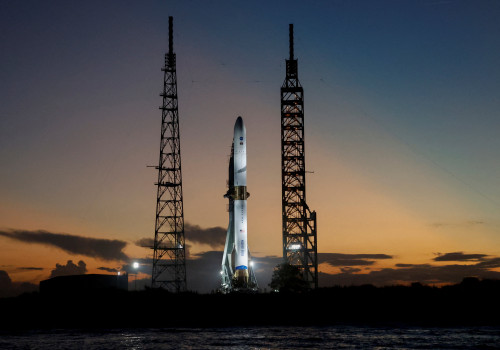By Hadeel Al Sayegh
DUBAI (Reuters) -Saudi Arabia’s state oil giant Aramco expects to pay $31 billion in dividends to the Saudi government and its shareholders despite reporting lower earnings for the first quarter on Tuesday, hit by lower oil prices and volumes sold.
The Saudi government, which directly holds about 82.2% of Aramco, relies heavily on the company’s payouts, which also include royalties and taxes.
The kingdom, the world’s biggest oil exporter, is spending billions of dollars to diversify its economy away from crude.
Aramco reported a 14% decline in first-quarter net income to $27.3 billion in the three months to March 31, in line with analyst estimates and down from $31.9 billion a year earlier, according to a company earnings statement.
The company declared base dividend payouts for the first quarter totalling $20.3 billion which will be fully covered by first-quarter profit and a performance-linked dividend distribution of $10.8 billion to be paid in the second quarter.
Aramco introduced a special performance-based dividend last year based on record earnings for 2022 and on earnings for 2023 and said at the time it would amount to 50-70% of free cash flow.
It said it expects total dividends of $124.3 billion to be declared in 2024, of those $43.1 billion in performance-linked dividends.
OPEC+ has implemented a series of output cuts since late 2022 amid rising output from the United States and other non-member producers, and worries over demand as major economies grapple with high interest rates.
Brent crude has averaged around $83.50 so far in 2024, while Saudi Arabia needs oil at $96.2 to balance its 2024 budget, the IMF forecasts. With a projected budget deficit of 79 billion riyals ($21.07 billion) this year, the kingdom could delay parts of its multiple mega projects.
Finance Minister Mohammed Al Jadaan said recently that the kingdom’s Vision 2030 plan to transform its economy will be adjusted as needed, with some projects being scaled back or extended and others accelerated amid a challenging environment.
The kingdom could also raise up to 138 billion riyals ($36.80 billion) in financing in 2024, from $23 billion initially estimated at the beginning of year.
Aramco itself is likely to issue bonds in 2024, its CFO said earlier this year.
The Saudi government in late January ordered Aramco to scrap its expansion plan to boost production capacity to 13 million barrels a day (mbpd), returning to the previous 12 mbpd target.
Two projects that were part of the expansion plan – Safaniyah and Manifa – are now on hold, while three others are ongoing.
On Tuesday Aramco said Marjan and Berri were expected to come onstream in 2025 adding 300,000 barrels per day (bpd) and 250,000 bpd respectively while Zuluf was on track to add 600,000 bpd by 2026.
Maximum production capacity will be optimised to maintain it within the 12 million bpd target despite ongoing projects.
Saudi Arabia is poised to sell more shares of energy giant Aramco, three people familiar with the matter told Reuters in February, and has lined up Citigroup, Goldman Sachs and HSBC for the sale, according to one of the sources.
($1 = 3.7502 riyals)
(Additional reporting by Rachna Uppal;Editing by Louise Heavens, David Goodman and David Evans)





